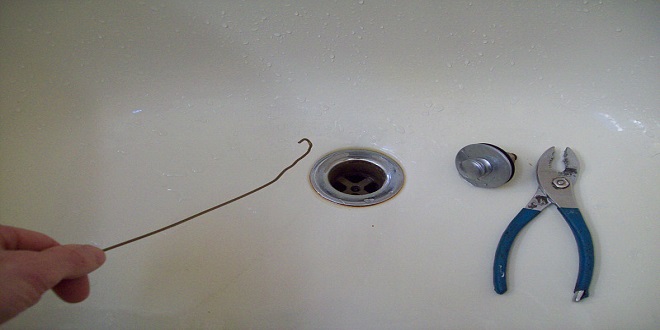How to Fix a Slow Draining Tub

A slow draining tub is a typical issue that can be a nuisance also. It is not a good idea to sit in a pool of water that is murky while showering. Check out our tips for fixing an unblocking bathtub.
There are many possible reasons for a shower that drains slowly. Let’s look at the most frequent issue first: a blockage in the drain of the shower, or in the P-trap below it.
It is not necessary to contact an expert plumber to look into and address this issue. The most important tool you require is a the plumber’s snake available to buy from the hardware stores or at a home center.
Professional grade plumbing snakes can run thousands of dollars however you can purchase one that is powered through a drill or hand for less than $25. A hand-powered snake could also be referred to as an auger drum if you’re doing a search. A plumber’s snake, even a less expensive one, is an excellent tool to possess. It will help you clean out clogs in toilets showers, and sinks.
Tub Drain Anatomy
Before beginning it is advisable to learn about the anatomy of a common tub. The drainage system of the tub is comprised of an L-shaped structure which includes the drain for the tub as well as the overflow tube and a stopper that can be lowered and raised inside the tube that is overflow.
The drainage assembly in the tub is able to feed the water to a P-trap which could also be an obstruction. Even if your tub does not have an issue with slow draining it is a good idea to wash the drain of your tub once a one or two years. This prevents hair and soap scum from building up.
Snake the Drain to Clear Clogs
To begin, take off the tub’s drain cover , or drain plug. Depending on the shape that your drain is in, you’ll require either a screwdriver or pliers accomplish this.
Cover the drain in the drain with a towel. This will stop a dropped tool from damaging the tub and stopping loose screws from falling in the drainage.
Then, remove the cover plate to access the tub’s drain tube, that also has an stopper device. (Hold the screws on the cover plate; several have gone missing to an open drain of the tub.) Take care to pull the stopper’s linkage and away from the tube that is overflowing.
The two steps of disassembly will likely reveal a knot of hair as well as soapy scum. There’s more. To start put the end on your snake inside the drain of your tub and push it through the drain line and twist the snake while you go. The snake will not go much further; it will hit the overflow tube quickly.
Take the snake off and take out the mess you’ve picked up. Continue to work the snake through the overflow tube in the exact manner, twisting the tube when you push. This is the goal: allow the snake to move further beyond the drain, and eventually into the P-trap. Here’s likely to be more debris to clean.
After removing the snake and removing the goop add water to the drain in the tub, and then check whether the clog has been cleared. If the water drains swiftly just as it should, restore the tub and declare the job accomplished.
If your snaking session produces many hairs and soap scum but remains with an inefficient drain it is likely that the P-trap is blocked. To clear it, close the overflow hole using an abrasive and then add hot water. This can help dissolve soap scum and soften it.
Pressurize the drain line using the plunger of a plumber.
Clearing a Clogged Vent Pipe
If a tub continues run slowly after the basic cleansing mentioned above, the issue could be due to an obstruction in the vent pipe.
Vent pipes are affixed to the roof and open to the air, allowing equal the pressure in drain lines, to ensure that a vacuum effect doesn’t interfere with the drainage. Since vent pipes are accessible from high elevation, the vent pipe is prone to become blocked by leaves, sticks as well as other dust. The blockages may also be caused by of animals or insects.
If you think that a blocked vent is making the plumbing in your home drain slowly, you should investigate the same way as plumbers do:
Sit in the ceiling, put a flashlight through the vent, and check to see if it is possible to detect an obstruction. If it is, do your best to get the debris out and up using your snake.
Then place the garden hose into the vent, and then let someone switch off the water a few minutes.
Be attentive as the vent fills with water. You can take a second look after the water has been shut off. A distinctive whistling sound will alert you that the blockage has been moved into the drain.




